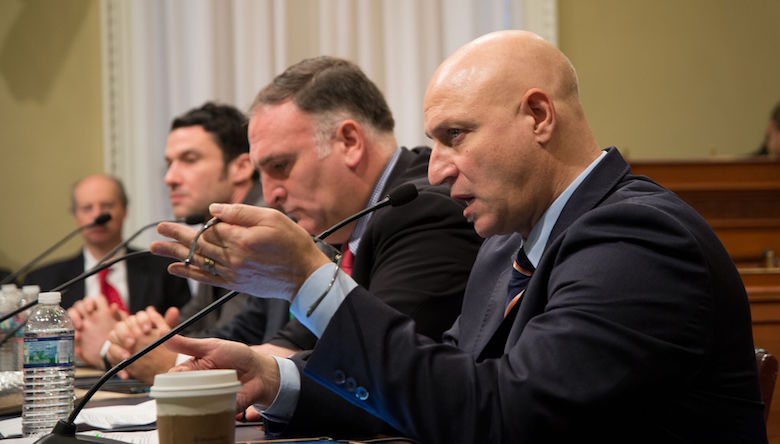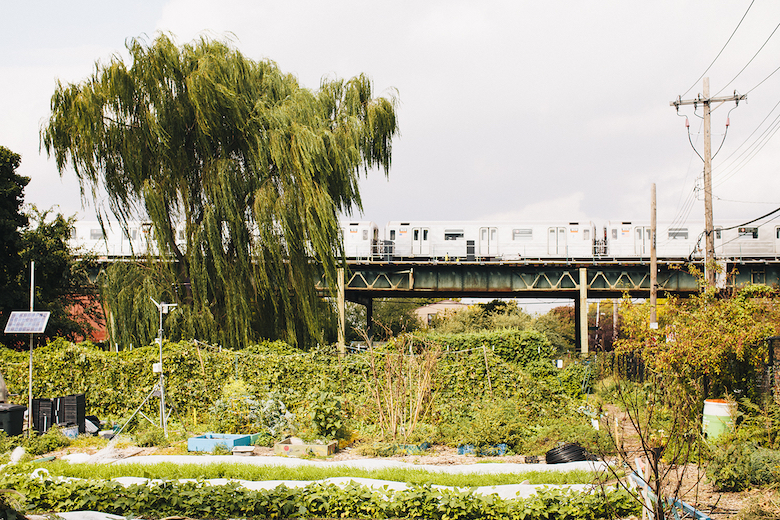A forgotten pie, a farm at the end of the 3 line, a new approach to food waste. As the year comes to an end (you have our permission to jump for joy at that), we’re taking a look back at the stories we covered throughout 2016.
It would be impossible to list all of the stories that struck a chord with us, we met too many people doing too many amazing things for that but here are a few of our favorites. Re-read your favorites or catch up on the ones you missed and shoot us an email about which ones stood out to you that we may have missed.
6 Dispatches from Our Very Near Food Future by Brian Halweil

Every person who walked the dark, soil-lined corridor at the Food Loves Tech opening had little idea what they would encounter on the other side.
That goes for me, too. I was intimately involved with the conceptual stages of the event nearly two years ago, but this ambitious undertaking had so many twists and turns that even I did not know what to expect. Read more.
Personalizing Pasteles by Alicia Kennedy

We bought the pasteles from Carmen. She was my dance teacher’s mother, a good-natured woman with dyed red hair who ran the desk at the studio and put up with the overzealous moms and young brats in leotards. Come Christmastime, she also became a sought-after maker of the coveted, tightly wrapped pockets of mashed plantain, yucca, pork and spices that are a seasonal Puerto Rican tradition. Read more.
Chefs Who Won’t Just Shut Up and Cook by Lori Azim

Michel Nischan grew up in a family that relied on food stamps during hard times. Son of a school lunch lady, Tom Colicchio realized he should be doing more than fundraising for food banks when his wife made a documentary on American hunger that proved charity couldn’t solve the problem. And Bill Telepan saw the anemic salad served in his daughter’s public school cafeteria and knew he could help students eat healthier—even in the poorest neighborhoods. Read more.
The Women Behind Harlem’s Farmers Markets by Emma Cosgrove

The three women in this story show that when you shop at a farmers market in an up-and-coming neighborhood, it’s likely that the organizer was there before local real estate became desirable—and they just might have been a substantial part of making it what it is today. Read more.
At the End of the 3 Line, East New York Farms! Grows by Siena Chrisman

Take the 3 train to the penultimate stop on a summer Saturday. The barren roofscapes you see from the elevated track don’t hint that you’re entering the neighborhood with the most community gardens in the city. But walk down Livonia Avenue under the tracks, and the scene changes: there are gardens on every block, some threatening to spill through their fences, others tamed into neat raised beds. Follow signs for the farmers market—the hand-painted signage on the fence, the tempting smells and the reggae/R&B/salsa mix. Round the corner onto Schenck and you’ve found the heart-beat of this community, in the midst of the impromptu dance party, the Caribbean breakfast specialties, the hot peppers ranging across the rainbow (and Scoville scale), and the young people proudly hawking their greens and bitter melon. Read more.
The Long-Forgotten New York Pie That Was “The Cronut of 1946” by Regina Schrambling

I could type up a baker’s dozen reasons why Petee’s Pie Company on the Lower East Side is a great story. Start with the fact that it was started using earnings from one of the founders’ days playing professional poker. Or the fact that the other founder is a second-generation professional pie baker on her second career. Or even, especially, that the pies it sells are exceptional, the ingredients locally sourced, the crust so flaky-tender it barely holds together, the fillings rich but balanced, every mouthful an amazement. Read more.
Scavenging at Dead Horse Bay by Yvette Cabrera

As my Converse sneakers crushed broken bottles farther into the sand, it was clear this wasn’t any old littered beach but a piece of New York City’s complex—and somewhat forgotten—history. Situated on the western shore of Brooklyn’s Barren Island, Dead Horse Bay is where horses came to die and houseware came to be forgotten. Read more.
One Massive Produce Distributor Is Reinventing Its Approach to Food Waste by Jesse Hirsch

Thomas McQuillan has started seeing food waste everywhere, and it makes sense. This is the guy in charge of eliminating all food waste from Baldor, the massive produce supplier for our city’s commercial kitchens. Now when he eats at restaurants, dinner parties, even his own kitchen, the former construction magnate is near-obsessive about keeping food from the wastebin. Like the copy editor who wants to fix every misspelled subway ad, McQuillan struggles to shut down his work brain after hours. Read more.



